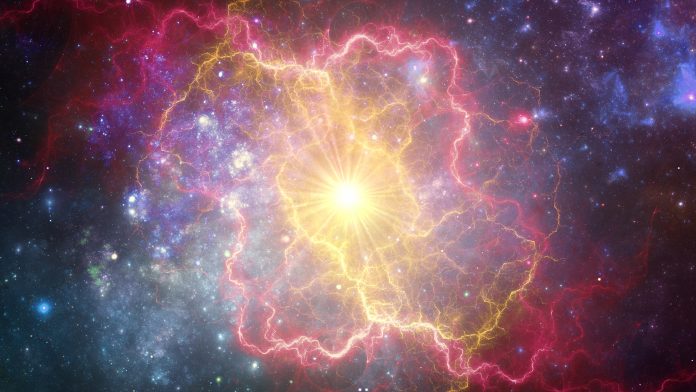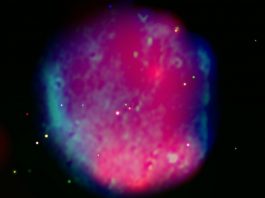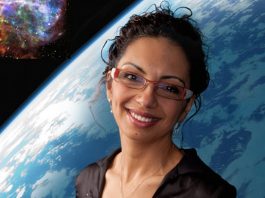In a groundbreaking discovery, an international team of researchers has classified the first-ever electron-capture supernova, ending a long-standing debate of their existence.
The interstellar investigation, led by Daichi Hiramatsu of the University of California Santa Barbara and Las Cumbres Observatory, analysed the supernova SN2018zd, resulting in the discovery of a novel type of stellar explosion known as an electron-capture supernova, the existence of which was first theorised around 40 years ago.
Supernovas of this nature are incredibly elusive, born from the explosions of stars eight to nine times the mass of our Sun, with the discovery potentially solving a thousand-year-old mystery of a supernova that ancient astronomers observed, subsequently becoming the Crab Nebula we know today.
Their research is published in Nature Astronomy.
Understanding the phenomenon
Supernovas are an explosion of a star caused by a sudden imbalance of the two opposing forces that shaped it, with gravity trying to contract every star. For example, the Sun’s nuclear fusion in its core counter-balances this gravitational force, producing sufficient pressure to oppose it, with gravity unable to collapse the star as long as there is adequate nuclear fusion. Inevitably though, nuclear fusion will eventually end, and the star will start to collapse, with stars like our Sun becoming a white dwarf, where the material becomes so dense that the quantum forces between electrons prevent further collapse.
Contrastingly, for stars ten times larger than the Sun, these electron quantum forces are not strong enough to prevent the gravitational pull, meaning the core will continue to collapse until it becomes a black hole or a neutron star. For stars situated in the intermediate mass range, electrons are squeezed onto atomic nuclei, which removes the electron quantum forces that the collapse and subsequent explosion of a star – a supernova.
Before this latest discovery, there were only two known types of supernovae, a thermonuclear supernova, and a core-collapse supernova. A thermonuclear supernova occurs when a white dwarf explodes after accruing matter in a binary star system; white dwarfs are dense cores of ash remnants of a low-mass star up to eight times the mass of our Sun.
A core-collapse supernova is initiated when a massive star – up to ten times the mass of the Sun – is depleted of nuclear fuel, and its core collapses – resulting in a black hole or neutron star. Scientists had theorised that somewhere in the borderline of these two types of supernovas is when an electron-capture supernova could occur, with Ken’ichi Nomoto of the University of Tokyo first hypothesising this in the 1980s. Decades of research has enabled astrophysicists to know what to look for when identifying an electron-capture supernova, such as losing a considerable mass of a particular composition before exploding, being relatively weak, little radioactive fallout, and creates neutron-rich elements.
Verifying an electron-capture supernova
For their investigation, the team analysed SN2018zd, located in the NGC 2146 galaxy, which has all the theorised properties of an electron-capture supernova, qualities never observed in any other supernova. SN2018zd is in relative proximity to Earth – only 31 million light-years away – meaning they were able to utilise pre-explosion archival images obtained by the Hubble Space Telescope to identify the star with it meeting the characteristics of what would imminently become an electron-capture supernova.
Although various prior supernovas had only a few of the indicators of an electron-capture supernova, SN2018zd comprised all six – a progenitor star that fits within the expected mass range, strong pre-supernova mass loss, an unusual chemical composition, a weak explosion, little radioactivity, and neutron-rich material.
Hiramatsu said: “We started by asking ‘what’s this weirdo?’ Then we examined every aspect of SN 2018zd and realised that all of them could be explained in the electron-capture supernova scenario.”
The discovery also potentially explains another famous supernova that occurred in the Milky Way in 1054 AD, with ancient records stating that it was so bright that it could be seen in the daytime and cast shadows at night, eventually becoming the crab nebula. Initially, this was dismissed as an electron-capture supernova, with this novel finding indicating that this ancient star explosion was indeed an electron-capture supernova.
Dr Iair Arcavi, a Tel Aviv University researcher at the Raymond and Beverly Sackler Faculty of Exact Sciences who participated in a study, said: “It’s amazing that we can shed light on historical events in the Universe with modern instruments. Today, with robotic telescopes that scan the sky in unprecedented efficiency, we can discover more and more rare events which are critical for understanding the laws of nature, without having to wait 1000 years between one event and the next.”









